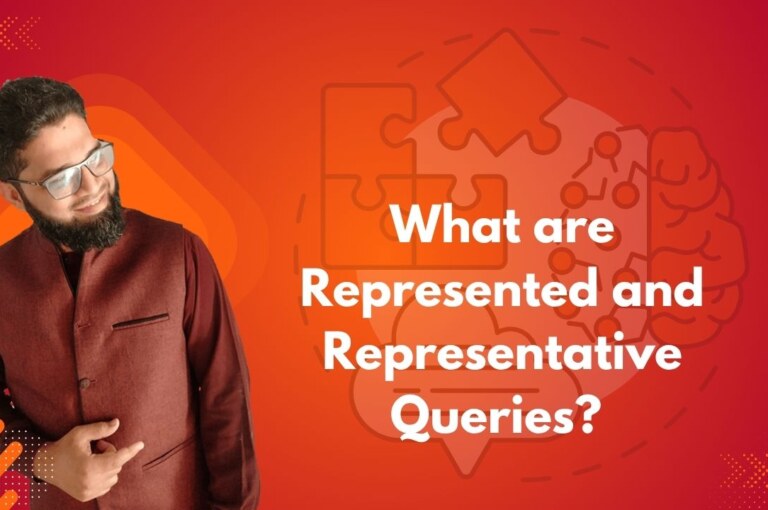Finding the right information at the right time often feels like searching for a needle in a haystack. Behind every search—whether it’s for the best pizza near you or an academic article on climate policy—lies a powerful engine interpreting your words and intent.
At the heart of this process are queries. But not all queries are created equal. Two fundamental but often misunderstood types play a critical role in how search engines and information systems perform:
- Represented Queries
- Representative Queries
If you’re working in SEO, data retrieval, search design, or machine learning, understanding the difference can be a game-changer in optimizing relevance and performance.
What is a Represented Query?
A represented query is the exact search term or phrase entered by a user into a search engine or database. It reflects the real-time, immediate input from an individual seeking information.
Represented queries are often further processed through techniques like query phrasification, query augmentation, or altered query handling to improve search accuracy, disambiguate intent, and align better with indexed content.
When someone types:
“Best pizza places near me”
That phrase is the represented query—the raw expression of the user’s intent.
Key Characteristics:
- It directly reflects the user’s current need or question.
- It’s what gets submitted into the search bar or system interface.
- It acts as the starting point for query interpretation and result ranking.
Search engines like Google interpret represented queries by analyzing:
- Word patterns
- Contextual meaning
- Location or device info
- Query history
What is a Representative Query?
A representative query is used not by end users, but by researchers, developers, or system testers to evaluate or simulate real-world queries. These are designed to generalize the information needs of a broader user group.
For testing a pizza delivery system, representative queries may include:
- “Pizza near Times Square”
- “Cheapest pepperoni pizza”
- “Late-night pizza delivery in Brooklyn”
These are not tied to any one user session but represent common patterns of inquiry that a retrieval system must handle.
Key Characteristics:
- Used for evaluation, benchmarking, and system training
- Captures recurring or shared user intents
- Helps refine algorithms to address diverse scenarios
Comparison: Represented vs. Representative Queries
| Aspect | Represented Query | Representative Query |
|---|---|---|
| Definition | Actual query input by a user | Simulated or generalized query used for evaluation |
| Use Case | Direct search execution | System testing, research, optimization |
| Tied to User Session? | Yes | No |
| Focus | Individual user need | Broader user behavior |
| Examples | “Affordable hotels in Paris” | “Luxury hotels in Europe”, “Budget stays near Eiffel Tower” |
How These Queries Work Together in Information Retrieval Systems!
The two types of queries operate at different levels of the retrieval process:
- Represented Queries drive real-time search interactions → The search engine must immediately return relevant content
- Representative Queries support system development and evaluation → Used in A/B testing, algorithm training, and benchmarking
Together, they form a feedback loop:
Represented queries fuel data for creating better representative queries, which in turn improve how well the system handles future represented queries.
Why This Matters: Real-World Applications!
Understanding the difference between represented and representative queries has important implications across multiple fields. In Search Engine Optimization (SEO), represented queries are the exact terms users type into search engines like Google, while representative queries help SEO professionals develop keyword strategies that capture broader user intent and behavior patterns.
In academic research, representative queries are frequently used to benchmark and test the performance of search algorithms and relevance models, ensuring they perform well under diverse conditions.
For e-commerce search, distinguishing between these query types allows platforms to fine-tune how products are surfaced, ensuring relevance for both specific and generalized searches.
Finally, in AI and Natural Language Processing (NLP), representative queries play a critical role in training large language models, enabling them to simulate and respond to a wide range of real-world user inputs with improved understanding and accuracy.
Final Thoughts
Understanding the difference between represented and representative queries is fundamental to building better, smarter, and more intuitive search systems.
- Represented queries are about what one person types right now.
- Representative queries help design systems that serve many users over time.
By combining the two, developers and analysts can improve information retrieval systems, ensuring accuracy, speed, and user satisfaction across the board.
In a world flooded with information, it’s not just about asking questions—it’s about how well systems understand and represent them.
Want to Go Deeper into SEO?
Explore more from my SEO knowledge base:
▪️ SEO & Content Marketing Hub — Learn how content builds authority and visibility
▪️ Search Engine Semantics Hub — A resource on entities, meaning, and search intent
▪️ Join My SEO Academy — Step-by-step guidance for beginners to advanced learners
Whether you’re learning, growing, or scaling, you’ll find everything you need to build real SEO skills.
Feeling stuck with your SEO strategy?
If you’re unclear on next steps, I’m offering a free one-on-one audit session to help and let’s get you moving forward.





Leave a comment